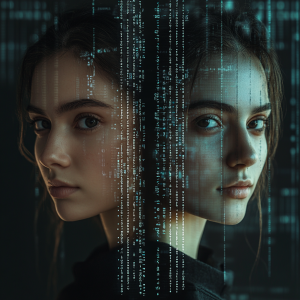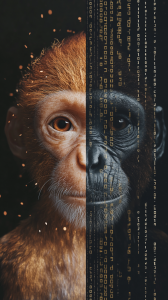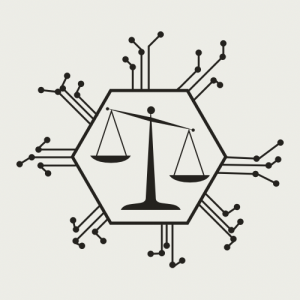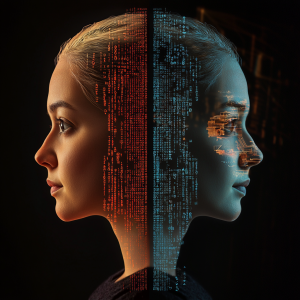Imagine scrolling through your morning news feed and seeing a video of a world leader declaring an absurd new policy – only to discover later it was an AI-generated hoax. In today’s era of deepfakes, seeing is no longer believing. These hyper-realistic fake videos and images, created by advanced AI, have exploded in prevalence (growing nearly 900% annually) and can make anyone appear to say or do just about anything. From a celebrity “appearance” in a scandalous clip to a bogus audio of your CEO asking for a fund transfer, deepfakes grab our attention and blur the line between reality and fiction. In this post, we dive into what deepfakes are, why they matter legally (especially in Europe), the latest AI wizardry making them more convincing than ever, and how you can spot and guard against these digital forgeries.
What Are Deepfakes?
Deepfakes are a form of synthetic media – images, videos, or audio generated by artificial intelligence to portray events that never actually happened. The word deepfake itself is a mashup of “deep learning” (AI techniques with layered neural networks) and “fake”, hinting at its core idea: fakes powered by AI. The term originated in late 2017 on Reddit, where an anonymous user nicknamed “deepfakes” shared AI-manipulated pornographic videos with celebrity faces swapped ine. Those illicit face-swapped clips (often of actresses) spread like wildfire and gave this new phenomenon its name. Since then, the technology has rapidly advanced and broadened. Today, deepfake describes any AI-generated or altered content that convincingly mimics real people or events – whether it’s swapping one person’s face onto another’s body in a video, cloning someone’s voice, or entirely fabricating a realistic scene.
How do deepfakes work? Under the hood, most deepfakes rely on powerful machine learning algorithms. One popular approach uses Generative Adversarial Networks (GANs) – essentially pitting two AIs against each other: a generator that tries to create a realistic fake, and a discriminator that tries to detect fakes. The generator iteratively tweaks the output until the discriminator is fooled, producing an eerily real result.
Another common technique uses encoder–decoder models for face swapping. For example, to swap Alice’s face onto Bob’s body in a video, an AI “encoder” is trained on many images of both Alice and Bob to learn their facial features. A “decoder” then maps Alice’s learned features onto Bob’s face in each video frame, making it look like Alice is doing whatever Bob originally did. With enough training data (often thousands of images) and computing power, the end product is a video where Alice’s face seamlessly replaces Bob’s, often with shockingly lifelike results.
In the early days, creating a deepfake required significant expertise and computing muscle. Researchers and hobbyists shared open-source tools, and by January 2018 a user-friendly app called FakeApp had launched, letting amateurs produce rudimentary face-swapped videos on their home PC. The technology has only grown more accessible since. Today there are free mobile apps and websites that allow one-click deepfakes, and with just a single clear photo you can make someone sing, dance, or say whatever you type. The quality of deepfakes has also improved dramatically: early deepfakes often had tell-tale glitches – flickering faces, odd eye movements, or robotic voices – but newer techniques have ironed out many of these kinks.
Deepfakes can be fun or frightening, depending on how they’re used. On the benign side, deepfake technology offers creative possibilities: hobbyists have inserted actor Nicolas Cage into dozens of movies he never starred in (a popular early meme), and Hollywood studios are experimenting with AI for seamless VFX, like de-aging actors or bringing historical figures to life on screen. Even satire has a new tool – think of comedic videos with impersonated politicians saying silly things (with obvious disclaimers). However, the darker side of deepfakes has become far more prominent. A staggering majority of deepfakes online – about 95% by one 2019 analysis – were non-consensual pornographic clips, typically mapping female celebrities’ faces onto adult film actors’ bodies. In other words, from the start, deepfakes have been widely abused to create fake porn and harass or humiliate individuals, especially women. Beyond porn, recent years have seen deepfake images and videos used to fuel propaganda and misinformation: from a fake image of Pope Francis in a stylish puffer jacket that went viral on social media, to a fabricated video of Facebook’s Mark Zuckerberg appearing to brag about controlling “stolen data”. None of these events actually occurred, but the deepfakes were so realistic that many viewers were fooled – at least initially.
In essence, deepfakes enable anyone to manufacture events in video or audio format, creating a new reality where seeing (or hearing) is not proof of truth.

Types of deepfakes
It’s not just face-swapped videos. Deepfake technology can manipulate or generate content across media:
Face-swapped videos:
The classic deepfake – swapping one person’s face into another’s video. This can range from harmless (e.g. inserting a different actor into a movie scene) to harmful (e.g. putting someone’s face in a sexual video without consent).
Voice clones:
AI models can learn to mimic a person’s voice from audio samples. With voice swapping, you can make it sound like a politician or CEO said something they never did. This has been used in scams – for instance, fraudsters clone a CEO’s voice to phone an employee and authorize a fake money transfer.
Full-body deepfakes (body puppetry):
Beyond the face, AI can also transfer body movements or mimic someone’s entire body in a video. A deepfake might show a person performing actions they never did (like a public figure appearing to dance or a criminal suspect “caught” on CCTV doing something they didn’t).
Image deepfakes:
AI-generated photographs of people who don’t exist, or doctored images (for example, altering a real photo to change someone’s expression or setting). A famous recent hoax showed an image of former U.S. President Donald Trump apparently being arrested amid a crowd – entirely AI-generated but photorealistic.
Audio deepfakes
Similar to voice cloning, this can be just audio clips – like fake voicemail messages or speeches created with an AI voice. Many of us have heard AI-generated song covers where a famous singer’s voice is cloned to perform a song they never sang.
Underlying all these is the same idea: using machine learning to fabricate content that looks or sounds real. As technology advances, the line between real and fake content keeps getting blurrier – and that’s where the legal and societal headaches begin.
Legal Relevance and Risks
Deepfakes might be high-tech, but at their core they raise age-old legal issues: fraud, defamation, impersonation, privacy violations, and more, now turbocharged by AI. Let’s break down why deepfakes are legally relevant and what risks they pose to individuals and society.
Harms to Individuals: Defamation, Identity Theft, and Consent
For individuals, the most obvious risk of a deepfake is having your likeness stolen and used in a damaging way. Imagine a fake video shows you committing a crime or making racist remarks you never uttered – the reputational damage is immediate. Such a video is essentially defamation via AI. Defamation laws (libel and slander) apply to false statements that harm a person’s reputation, and a deepfake can be a very compelling false statement if it convinces people you said or did something heinous. For instance, a deepfake could be used to falsely “prove” that a politician took bribes or that a celebrity engaged in illegal acts, leading to real-world fallout before the truth is clarified. In Germany, defamation (Üble Nachrede or Verleumdung) is a criminal offense (§§186–187 StGB), and creating or knowingly distributing a deepfake that attributes false misconduct to someone could fall under these laws – although German courts have yet to tackle deepfake-specific defamation cases. Victims could also pursue civil personality rights claims for any false portrayal that harms their honour or reputation.
The most prevalent deepfake abuse so far, however, is non-consensual pornography, sometimes called “deepfake porn.” As noted, an overwhelming 95% of deepfake videos detected online by 2019 were pornographic, typically with a woman’s face pasted into explicit content without her consent. This is a grotesque invasion of privacy and sexual autonomy. Victims of deepfake porn (often celebrities, journalists, or even ordinary people whose photos are scraped from social media) experience severe distress, humiliation, and reputational harm. Legally, this implicates the right to one’s likeness and privacy – in German law, the general Persönlichkeitsrecht (personality right) includes control over your image and intimate sphere. Creating or sharing a fake sexual image of someone without consent violates their personal rights and can lead to civil lawsuits for injunctions and damages. In the EU, it may also violate data protection law if it involves processing someone’s image (biometric data) without a legal basis. A deepfake porn victim in Germany could potentially sue under §22 Kunsturhebergesetz (the law that protects a person’s right in their own image) or rely on the general personality right under §823 of the Civil Code (BGB) to claim damages for serious privacy infringement. Some countries are also criminalizing this behavior directly: the UK’s new Online Safety Act, for example, explicitly makes it a crime to create or share deepfake explicit images without consent (finally giving deepfake porn victims a clear path to justice). Germany’s criminal code does not yet have a specific “deepfake porn” provision, but related offenses like §201a StGB (violation of intimate privacy by taking/sharing images) could, in spirit, apply – though §201a is currently written to cover real images, not AI-generated fakes. This gap is one reason German lawmakers are looking to update the law (more on that shortly).
Beyond reputational harm and privacy, deepfakes enable identity theft and fraud in alarming new ways. If someone can clone your face or voice, they can impersonate you for criminal purposes. Consider financial scams: criminals have used AI voice synthesis to impersonate company executives and trick subordinates into transferring money. In one reported case, fraudsters in Hong Kong used a deepfake voice to convince a bank manager to wire $35 million to a fraudulent account. In another, a deepfake “video call” was used to pose as a company director and authorize a bogus transaction. These schemes fall under classic fraud laws, but the modus operandi is novel – law enforcement now must consider “Was the voice on that call real, or an AI fake?”. Likewise, deepfake technology has been leveraged for so-called “CEO fraud” and fake kidnapping schemes: scammers generate audio of someone’s child crying for help to extort ransom from parents, for example. Such conduct would violate criminal laws against fraud, extortion, impersonation, etc., just as if no AI were involved. But from an evidentiary standpoint, prosecutors face the challenge of proving who made the deepfake. The average person, meanwhile, is left feeling a bit paranoid: a phone call or video chat that looks/sounds like your loved one might not be real. This erosion of trust is itself a personal harm, making us doubt the authenticity of everyday communications.
Psychologically, being the victim of a deepfake can be devastating. Particularly in cases of fake explicit content or defamatory clips, victims describe feelings of violation akin to sexual assault, intense anxiety, and the collapse of their sense of security. They must also struggle to get the content taken down from the internet (a Herculean task once something goes viral). Consent is a core principle here: our images and voices are part of our identity, and using them in any manner – let alone a derogatory fake – without permission is a fundamental breach of one’s rights. That’s why laws like GDPR treat biometric data as sensitive personal data requiring explicit consent. If someone makes a deepfake of you without consent, they’re arguably processing your personal data unlawfully, giving you grounds to demand its erasure under the GDPR’s “right to be forgotten”. In practice, enforcing this against anonymous internet trolls on foreign websites is hard, but the legal theory is there. Meanwhile, from the angle of intellectual property, if a deepfake uses parts of copyrighted material (say, scenes from a film or music in a fake video), it could infringe copyright law as well. For example, inserting an actor’s face into a movie clip without permission might violate the movie studio’s copyrights in that footage. Even though a person’s face or voice itself isn’t protected by copyright, the source material used to create the fake (photos, videos, audio recordings) often is. So a deepfake creator might find themselves not only sued for personal rights violations, but also for copyright infringement by the rights holders of any content they misused.

Dangers to Society: Disinformation and Eroding Trust
On a societal level, deepfakes raise red flags for democracy and public trust. If anyone can fabricate a seemingly authentic video of a public figure, how do we trust what we see in the news or on social media? Deepfakes have already been weaponized to spread disinformation and manipulate public opinion. For example, deepfakes have been used to discredit politicians by making them appear to say inflammatory things or behave badly. A well-timed fake video could swing voters or incite unrest. In 2018, a deepfake video of a politician in India saying compromising things circulated before an election. In 2022, a deepfake of Ukrainian President Zelenskyy emerged, falsely showing him telling his troops to surrender – an obvious piece of propaganda aimed at undercutting morale. As deepfakes get more convincing, the worry is that hostile actors (whether foreign adversaries, extremist groups, or just mischief-makers on the internet) will use them to sow chaos and doubt. European officials have pointed out that deepfakes could become a tool to distort democratic discourse and elections, effectively a high-tech extension of “fake news” campaigns.
There’s also a more insidious effect known as the “liar’s dividend.” This is the idea that the existence of deepfakes allows real perpetrators to deny reality. If a real video emerges of a public figure doing something awful, they can dismiss it as a deepfake and plant doubt in the public’s mind. We’re already seeing hints of this: notably, tech mogul Elon Musk once tried to brush off an actual embarrassing recording by suggesting it might have been a deepfake. In a world where any video could be fake, criminals and wrongdoers gain plausible deniability – “you can’t prove it’s real!” – which undermines accountability. Courtrooms may see more defendants claiming video evidence against them is fabricated. The net effect is a erosion of trust in all visual/audio media. Society relies on shared reality and credible information to function; deepfakes threaten to corrode that foundation by making people question everything and believe anything.
From a legal policy perspective, these risks have galvanized lawmakers to act (or at least talk about acting). Governments worry that deepfakes could turbocharge propaganda, stock manipulation (imagine a fake video of a CEO admitting a company is bankrupt – stock prices plummet), or even diplomatic crises (a deepfake of one country’s leader declaring war on another could conceivably spark conflict if believed). The dangers to financial markets, national security, and public safety are not lost on regulators. In response, there’s a push to update laws and equip authorities to better handle deepfake-related crimes. But as we’ll see, tackling this high-tech challenge is tricky, and different jurisdictions are approaching it in notably different ways.
Laws and Regulations: EU and Germany’s Approach
Currently, in the EU and Germany, there is no single “Deepfake Law” – but that doesn’t mean deepfakes live in a lawless void. A patchwork of existing laws can often be applied to deepfake scenarios, and new laws are on the horizon.
In Germany and most of Europe, the primary legal shields against deepfake abuse are personality rights, data protection rules, and various criminal provisions. Germany’s allgemeines Persönlichkeitsrecht (general right of personality), derived from its constitution and civil code, gives individuals a broad right to control how their identity (image, voice, name, etc.) is portrayed. Using someone’s likeness in a fake video to their detriment can be seen as a violation of that right, allowing the person to seek a court injunction or damages. Likewise, laws like the Kunsturhebergesetz (KUG)require consent to publish someone’s photograph – this has traditionally covered real photos, but its principles extend to fake images that depict a person. In short, if you distribute a deepfake of someone without permission, you could be civilly liable for infringing their personal rights or privacy. This is how some deepfakes have already been forced off the internet using current law (e.g. courts ordering platforms to remove content that violated a person’s rights). Data protection (GDPR) adds another layer: a person’s image, voice, or other biometric identifiers are considered personal data. Creating or sharing a deepfake of a real person involves processing that data. Unless you have a legal basis (like consent, which you obviously won’t in a malicious deepfake case), it likely violates the GDPR. Notably, the GDPR classifies biometric data as “special category” sensitive data, meaning there’s an even higher bar to use it. In theory, a deepfake victim in the EU could complain to data protection authorities or sue under GDPR to get the fake removed and seek compensation. GDPR also provides a right to erasure, so a victim can demand that platforms like Google or Facebook delete deepfake content featuring them. However, enforcement is challenging – the GDPR wasn’t crafted with deepfakes in mind, and pursuing an anonymous Reddit user across borders is tough.
When it comes to criminal law, Germany has several provisions that can relate to deepfakes, but each covers only part of the problem. For example, if a deepfake is used to defame someone, defamation laws (§§185-187 StGB) could be invoked. If a deepfake pornographic image is shared, it might be prosecuted under laws against distributing obscene or sexual images without consent (though existing §201a StGB only covers real images/videos taken of someone’s private life, not AI-generated ones, which is a loophole). If a deepfake is used in fraud (like the CEO voice scam), the perpetrator can be charged with fraud (§263 StGB) or impersonation-related offenses. But Germany has started to believe these slices aren’t enough and a more direct approach is needed for the uniquely damaging aspect of deepfakes – the impersonation itself as the wrongful act, even absent a further crime like fraud or libel.
In mid-2024, the German Bundesrat (Federal Council) – the legislative body representing the states – took a bold step by proposing a dedicated criminal offense for certain malicious deepfakes. The draft law, initiated by the state of Bavaria, would add a new §201b to the Strafgesetzbuch (Criminal Code). This provision, titled something like “Violation of Personal Rights by Digital Forgery,” aims to explicitly criminalize creating or sharing realistic AI-generated recordings (deepfake images, videos, or audio) that violate someone’s personality rights. Offenders could face up to two years in prison. The motivation for this new law is the recognition that current criminal statutes only patchily cover deepfakes. For instance, as the Bundesrat noted, an AI-generated fake is not literally a “recording” of someone’s private life (so §201a StGB didn’t apply), and it’s not literally the person’s own “spoken word” (so §201 StGB, which protects the privacy of spoken words, didn’t apply either). Deepfakes kind of slipped through the cracks of laws designed for an analog world. The proposed §201b would fill that gap by focusing on the act of deception and misrepresentation itself. It’s essentially saying: if you make a fake likeness of someone that violates their dignity or reputation, you’ve committed a crime even if you didn’t defame them in words or commit another crime with it. Notably, the proposal highlights the serious dangers deepfakes pose to “the democratic decision-making process” and public trust, underlining that this isn’t just about individual harms but societal ones too.
As of the time of writing, this law is still in draft form (it must pass the Bundestag, etc.) and there’s debate around it. Some legal experts argue it might be overkill or too broad, since many deepfake abuses can be tackled with existing laws (personality rights, fraud, etc.) if applied correctly. Germany tends to be cautious about over-criminalization, especially where constitutional values like artistic and press freedom are concerned. Any deepfake law will have to be carefully written so it doesn’t punish satire or legitimate parody, for example. The draft §201b StGB does discuss exceptions – presumably for things like parody, art, or public interest uses – but it’s a fine line to draw. Regardless of these debates, it’s clear Germany is moving towards a more explicit protection against deepfake harms. We can expect in the near future a codified rule that says (in effect) “Thou shalt not maliciously impersonate others using AI.”
On the broader EU level, discussions are also underway to address deepfakes. The European Union has been proactive about AI regulation, and deepfakes are squarely on the radar. Two major EU initiatives are particularly relevant:
- The EU AI Act: This is a sweeping regulation in the works that will classify AI systems by risk and impose requirements accordingly. Under draft provisions of the AI Act, providers of “deepfake” or generative AI systems may be required to clearly label AI-generated content when it is disseminated. The idea is to ensure that people know when they’re looking at an AI fabrication (unless it’s obvious or used for permitted purposes like satire). The AI Act isn’t law yet, but it’s expected to fully take effect by 2026. If it passes in its current form, a deepfake of, say, a politician could be illegal in the EU unless it includes a notice or watermark indicating it’s not real. That could significantly curb deceptive uses. Of course, enforcement is another matter – the EU can regulate AI service providers and companies, but anonymous users on forums are harder to police. Still, the AI Act represents an attempt to get ahead of the deepfake issue by mandating transparency.
- The Digital Services Act (DSA): This EU law, which entered into force in 2023, targets online platforms and their content moderation duties. While not specific to AI, the DSA does require large platforms to mitigate the spread of disinformation, especially during elections. Deepfakes fall squarely into that category of content that platforms should watch out for. Under the DSA, major platforms (think Facebook, YouTube, TikTok) have to assess significant systemic risks, which include manipulative or fake media, and put in measures to address them. So if a dangerous deepfake is going viral, platforms could have a legal duty to act (remove it, label it, demote it, etc.). France even passed a specific law against manipulation of information in elections (sometimes dubbed the “Fake News Law”), which can be used to swiftly take down misleading deepfake videos during campaign periods. All in all, Europe is building a legal framework that treats deepfakes as a serious threat to information integrity, combining content regulation, AI regulation, privacy law, and old-fashioned personality rights to tackle the issue from multiple angles.
A Quick Comparison: US and China
Legal approaches to deepfakes vary around the world, often reflecting different political and cultural priorities. Let’s briefly peek at how the United States and China – two AI powerhouses – are handling deepfakes, in contrast to Europe.
- United States: The US, unlike the EU, does not (yet) have a comprehensive federal law on deepfakes. One big reason is the First Amendment – U.S. lawmakers have to be careful not to infringe on free speech when regulating content, even falsified content. That has made Congress hesitant to ban “fake videos” broadly, since satire and parody (protected speech) could be caught in the net. However, the US has started addressing specific harmful use cases. At the federal level, there have been proposals (like the DEEP FAKES Accountability Act), but none have passed as of 2025. Action has mainly happened at the state level: for instance, California was one of the first, passing laws in 2019 to ban malicious deepfakes in two contexts – deepfake porn and election interference. California’s AB 602 gives victims of fake porn a right to sue creators/distributors for damages, and AB 730 made it illegal to distribute deceptive deepfake videos of political candidates within 60 days of an election. (Enforcing the election deepfake ban is tricky and it had a sunset clause, but it signaled concern about election misinformation.) Texas similarly enacted a law prohibiting deepfakes that interfere in elections, making it a crime to create or distribute a video intended to harm a candidate’s reputation or influence voters within a certain period before an election. Virginia and some other states have criminalized sharing non-consensual deepfake porn as a form of image-based sexual abuse. Meanwhile, existing U.S. laws can sometimes be applied: victims have sued deepfake creators for defamation or intentional infliction of emotional distress, and celebrities might invoke their right of publicity (which protects against unauthorized commercial use of their image/likeness). There’s also an interesting angle with biometric privacy: Illinois’s Biometric Information Privacy Act (BIPA) requires consent to use someone’s biometric identifiers (face, voice), which could potentially cover using a person’s faceprint in a deepfake without consent. In practice, though, we haven’t seen a BIPA lawsuit against a deepfake creator yet – it’s more used against companies scraping images for AI training. By and large, the U.S. is still grappling with deepfakes via a mix of old laws and a few new state statutes. The patchwork nature and the free speech sensitivities mean the legal response is a bit slower and more reactive compared to Europe. Notably, U.S. tech companies are implementing their own measures (Microsoft, for example, has released deepfake detection tools; Facebook and others ban certain deepfakes in their policies). The White House has also flagged AI misinformation in its policy guidance, but hard law is lagging. So, in America: no single deepfake law, but specific bad uses (porn, election fraud) are being targeted, and general fraud/harassment laws fill some gaps.
- China: China, by contrast, has been very aggressive in regulating deepfakes – unsurprising given its tighter control over media and the internet. Starting in early 2023, China implemented the “Provisions on the Administration of Deep Synthesis Internet Information Services”, one of the world’s first comprehensive deepfake regulations. These rules require that any AI-generated or modified media content must be clearly labeledas such. In other words, if you create a deepfake video in China, the law says it should have a notice or watermark indicating it’s synthetic. The regulations also mandate that platforms offering deepfake tools or hosting deepfake content must verify users’ identities (to prevent anonymous misuse) and embed digital watermarks or other traceable markers in the content to help authorities track down the source. Using deepfakes for illegal purposes (fraud, defamation, etc.) or to “disturb public order” is explicitly prohibited, with penalties ranging from fines to criminal charges. On top of that, China’s broader laws like the Personal Information Protection Law (PIPL) treat biometric data as sensitive, similar to GDPR, requiring consent for its use. And of course, if someone used a deepfake to, say, impersonate a government official or spread dangerous rumors, China’s stringent cybercrime and misinformation laws would come down like a hammer. In fact, Chinese police have already acted on these laws – for example, in 2023, there were reports of arrests for using deepfakes in telecom fraud scams. In summary, China’s approach is heavy regulation and swift enforcement: you must label your AI-generated media, you must not misuse it, and if you do, you’re in serious trouble. This aligns with China’s general stance of tightly governing digital content and prioritizing social stability over free expression. It’s almost the polar opposite of the U.S. approach: China created top-down rules for deepfakes very quickly, whereas the U.S. is relying on bottom-up solutions and case-by-case actions.
Between these extremes, the EU sees itself as charting a middle course – trying to protect rights and democratic order without squashing innovation or speech. The EU’s focus on transparency (labeling deepfakes) and **privacy (consent for using someone’s data) is a distinctively European take, rooted in values of autonomy and trust. Germany’s move to criminalize certain deepfakes shows a willingness to penalize malicious actors, but there’s also caution to not overshoot (with debates about overbreadth as mentioned). We can expect continued refinement of these laws as deepfakes evolve. It’s a fast-moving target – legally and technologically.
How to Spot and Protect Yourself Against Deepfakes
As deepfakes become more convincing, it’s essential for all of us to sharpen our detective skills and take steps to protect our digital identities. While detection is getting harder, there are still often telltale signs of deepfake content if you know what to look for. And on the personal front, a few precautions can reduce the chances of your face or voice being weaponized. Here’s a practical guide:
Spotting Deepfakes
No matter how polished a deepfake is, it’s usually not perfect – especially if you pause, zoom in, or otherwise scrutinize it. When you come across a suspicious video or image, consider these tips to sniff out a fake:
- Face and body details: Look closely at the person’s face, especially the eyes and mouth. Early deepfakes had issues with eye blinking – either too infrequent or unnatural blinking – though this has improved in newer fakes. Even so, watch for glassy or dead eyes that don’t seem to focus naturally, or an absence of the subtle random movements real eyes make. Facial expressions might be slightly off or limited; a fake might not convey micro-expressions or the skin might not crease naturally with expressions. Check if the cheeks and forehead skin texture matches the person’s age and the lighting of the scene – sometimes deepfakes paste a face that’s too smooth or too wrinkly compared to the neck/hands. Misaligned features are a red flag too: for instance, the borders of the face where it meets hair or neck can be blurry or flickering in a fake.
- Lip-sync and voice: If it’s a video with sound, observe the synchronization of the person’s lips with the spoken words. Deepfakes often struggle with perfect lip-sync, especially for complex mouth movements or syllables. You might notice the mouth lagging a bit or the shape not matching certain sounds (like “f” or “th” shapes). Also listen to the tone and emotion in the voice – cloned voices sometimes sound monotonous or have odd intonation at spots. If the voice lacks the natural cadence or breath sounds you’d expect, it could be generated.
- Lighting and shadows: Examine the lighting consistency. Do the shadows on the face and body match the lighting of the environment? Often, deepfakes merge two different sources (the person’s face from one set of images onto a scene with different lighting), and slight inconsistencies can appear. For example, shadows might be too soft or harsh compared to other objects in the scene, or the direction of light on the face might not match the rest of the scene. Also, check reflections – a famous giveaway in some fakes is the person’s eyes not reflecting the light like a real eye would. If someone is standing in a room with a strong light on one side, a real video would have that reflected in the eyes; a fake might miss such details.
• Odd artifacts: Deepfake videos sometimes have glitches or artifacts especially during movement or transitions. Watch for any blurring or warping around the edges of the face, or strange changes when the person turns their head. Hair is notoriously hard for AI to get right – look at the outline of hair against the background; do strands disappear or does the hairstyle glitch when the head moves? Also check the temporal consistency: if you replay the video, do the same frames always look the same? If different playbacks show slight differences, it might be a sign of AI-generation. In AI-generated images, pay attention to things like hands and jewelry – AI often had trouble generating hands correctly (extra fingers or odd shapes) and might not faithfully reproduce complicated jewelry or patterns (they might morph or be asymmetrical).
- Context and metadata: Sometimes the content itself is implausible – use common sense and context. If a video shows a public figure doing something wildly out of character or in a setting that seems odd, be skeptical. Check if reputable news outlets have the story; if not, it might very well be fake. Technical clues can include checking the metadata of a video or photo file (though sophisticated fakers can forge metadata too). For example, if an image’s EXIF data has an odd software tag (like an AI tool name) or a creation timestamp that doesn’t align with the supposed event, that’s suspicious. Reverse image search can also be your friend for deepfake images – maybe you’ll find the original source image that was manipulated.
Keep in mind, deepfake detection is getting harder as quality improves. Researchers are developing AI detectors to flag fakes, but no method catches everything. So, your best defense is a combination of digital literacy and healthy skepticism. If something triggers your “this is too crazy to be true” instincts, double-check it. Cross-verify suspicious videos with multiple sources. In an era of “realistic lies,” taking a pause before believing and sharing sensational media is crucial.
Protecting Yourself
What can you do to prevent becoming the face of the next deepfake scandal or to minimize the fallout if it happens? While you can’t entirely control how images of you are used (especially if you’re active online), here are some practical steps:
- Guard your images and audio: Be mindful of what you share publicly. The more high-quality face photos or clear voice recordings of you available online, the easier it is for someone to train an AI model on them. For most of us, completely abstaining from posting pictures isn’t realistic, but consider tightening your privacy settings. For example, maybe don’t upload umpteen high-res selfies in different poses to public forums. Likewise, be careful with viral apps that ask you to upload your portrait to “turn you into a cartoon” or such – those could be harvesting data for AI training. If you’re a public figure or content creator, you can’t avoid having media of you out there, but you can at least watermark some of your content or use tools that subtly perturb the images (researchers have developed techniques to “poison” images so they’re harder to use for deepfake training – though these aren’t mainstream yet).
- Secure your identity verification: Given the rise of voice phishing via deepfakes, review how you and your close ones verify sensitive requests. For instance, if your “boss” calls or emails urgently asking for a money transfer, don’t rely on the voice or email alone – double-confirm via a known number or in person. Families are even starting to set up code words: a secret shared passphrase that a family member in distress would know. That way, if you get a call from your “child” crying that they’ve been kidnapped and need money (a sadly common deepfake scam), you can ask for the code word to confirm their identity. It may feel spy-movie-esque, but it can thwart crooks using AI copies of voices. Similarly, companies should implement multi-factor verifications for financial transactions (so a single phone call isn’t enough, AI or not).
- Leverage legal protections: Know your rights in your jurisdiction. In Europe, remember that GDPR gives you rights over your personal data – if a deepfake of you surfaces, you can invoke your right to deletion with the platform hosting it. Many social media platforms also prohibit certain deepfakes in their community standards (e.g., non-consensual intimate deepfakes usually violate terms of service). Don’t hesitate to report the content; platforms might remove it even before any legal action if it clearly violates their rules. If the situation is serious (like reputational harm or harassment), consult a lawyer about remedies. And with new laws emerging, creating or spreading malicious deepfakes might itself be a crime – meaning you could involve the police. Keep evidence (screenshots, URLs) of any deepfake content of you, in case it’s needed for a legal case.
- Stay informed and spread awareness: One way to protect society (and indirectly yourself) is to raise awareness about deepfakes. The more people know such fakes exist, the less likely they are to fall for them. Talk to your friends and family about the existence of this technology so they won’t be easily duped by a fake video or call. If you have older relatives, for example, explain that these kinds of scams are possible – many victims of voice deepfake scams are older folks who simply trust the voice they hear. By promoting a bit of “trust but verify”culture, we make it harder for deepfakes to achieve their malicious goals. Also, keep an eye on tech news: new detection tools or browser plug-ins may emerge that help flag AI-generated media. For instance, the Windows Photos app is adding image authenticity indicators, and browser extensions are being developed to alert if an image is likely AI-generated. Adopting these tools when available can add a layer of defense.
- Responding to a deepfake incident: If worst comes to worst and you find yourself the target of a deepfake (especially a defamatory or explicit one), take action quickly. Contact the platforms/websites where it’s appearing and file reports. Use the law – for example, in the EU you can send a GDPR takedown request or in the U.S. a DMCA notice if any copyrighted material is involved (sometimes the fastest way to get content removed is to claim copyright on the original images used). Let friends or followers know that the video/image is fake, to reduce its impact. In some cases, making a public statement through your own channels can help (though it can also draw more attention, so it’s a judgment call). And seek support – such incidents can be mentally traumatizing; talking to a counselor or at least friends you trust is important.
In summary, protecting yourself against deepfakes combines digital hygiene, cautious verification of communications, and using the legal/technical tools at your disposal. We may not be able to entirely prevent the malicious use of our faces or voices, but we can reduce the risk and be prepared to respond. As the saying (almost) goes, “Don’t trust everything you see on the internet – your own eyes and ears can deceive you now.”

Final Thoughts
Deepfakes sit at the uneasy intersection of dazzling technological innovation and dark mischief. On one hand, the ability to have AI generate ultra-realistic videos or voices opens up worlds of creative and productive possibilities. On the other hand, it equips the bad actors of the world with the ultimate disguise and deception toolkit. Legally and socially, we are playing catch-up with this fast-moving technology. Europe – especially Germany – is grappling with how to fit deepfakes into existing frameworks of privacy, personality rights, and information integrity, while also drafting new rules to fill the gaps. Other nations are likewise experimenting with solutions, from the laissez-faire (U.S.) to the heavy-handed (China). It’s a delicate balance: we want to curb the harms of deepfakes (and they can be extremely harmful, as we’ve seen) without stifling innovation or encroaching on free expression.
Ultimately, combating malicious deepfakes will require a combination of legal muscle, technological countermeasures, and plain old human vigilance. Laws can deter and punish the worst offenders, but no statute will magically make the problem disappear – especially on a global internet. Tech solutions like deepfake detectors and authenticity watermarks will help flag fakes, though it’s an arms race against ever-better generators. And each of us has a role, by being critical consumers of media and protecting our own digital identities. Deepfakes challenge the fundamental trust we place in audio-visual evidence; responding to that challenge calls on our fundamental ability to adapt, cooperate, and uphold truth. The genie is out of the bottle with AI image and video generation – it’s now up to society to civilize it. In the meantime, keep your wits about you, enjoy the creative uses of this tech, but stay aware that in the age of deepfakes, reality might need a second look. Seeing isn’t believing anymore, but knowing the tricks at least helps us not be fooled. Stay safe, stay informed, and don’t be afraid to demand accountability – whether from the faceless internet troll who made that fake video or the giant tech companies unleashing these algorithms. The truth still matters, and it’s up to all of us (with a little help from the law) to ensure it wins out in the deepfake era.
Stay curious, stay informed, and let´s keep exploring the fascinating world of AI together.
This post was written with the help of different AI tools.




